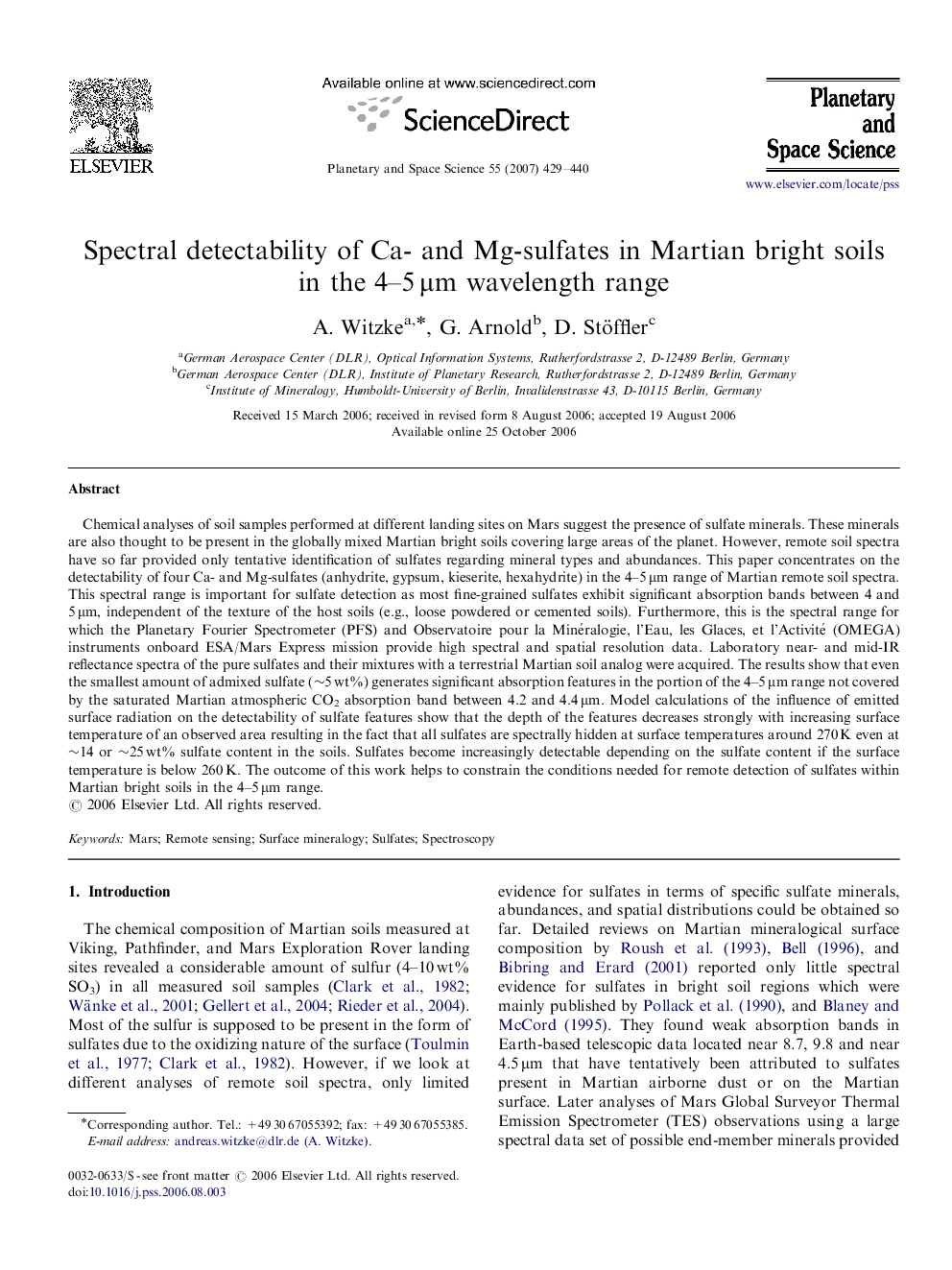| کد مقاله | کد نشریه | سال انتشار | مقاله انگلیسی | نسخه تمام متن |
|---|---|---|---|---|
| 1782658 | 1022350 | 2007 | 12 صفحه PDF | دانلود رایگان |

Chemical analyses of soil samples performed at different landing sites on Mars suggest the presence of sulfate minerals. These minerals are also thought to be present in the globally mixed Martian bright soils covering large areas of the planet. However, remote soil spectra have so far provided only tentative identification of sulfates regarding mineral types and abundances. This paper concentrates on the detectability of four Ca- and Mg-sulfates (anhydrite, gypsum, kieserite, hexahydrite) in the 4–5 μm range of Martian remote soil spectra. This spectral range is important for sulfate detection as most fine-grained sulfates exhibit significant absorption bands between 4 and 5 μm, independent of the texture of the host soils (e.g., loose powdered or cemented soils). Furthermore, this is the spectral range for which the Planetary Fourier Spectrometer (PFS) and Observatoire pour la Minéralogie, l’Eau, les Glaces, et l’Activité (OMEGA) instruments onboard ESA/Mars Express mission provide high spectral and spatial resolution data. Laboratory near- and mid-IR reflectance spectra of the pure sulfates and their mixtures with a terrestrial Martian soil analog were acquired. The results show that even the smallest amount of admixed sulfate (∼5 wt%) generates significant absorption features in the portion of the 4–5 μm range not covered by the saturated Martian atmospheric CO2 absorption band between 4.2 and 4.4 μm. Model calculations of the influence of emitted surface radiation on the detectability of sulfate features show that the depth of the features decreases strongly with increasing surface temperature of an observed area resulting in the fact that all sulfates are spectrally hidden at surface temperatures around 270 K even at ∼14 or ∼25 wt% sulfate content in the soils. Sulfates become increasingly detectable depending on the sulfate content if the surface temperature is below 260 K. The outcome of this work helps to constrain the conditions needed for remote detection of sulfates within Martian bright soils in the 4–5 μm range.
Journal: Planetary and Space Science - Volume 55, Issue 4, March 2007, Pages 429–440